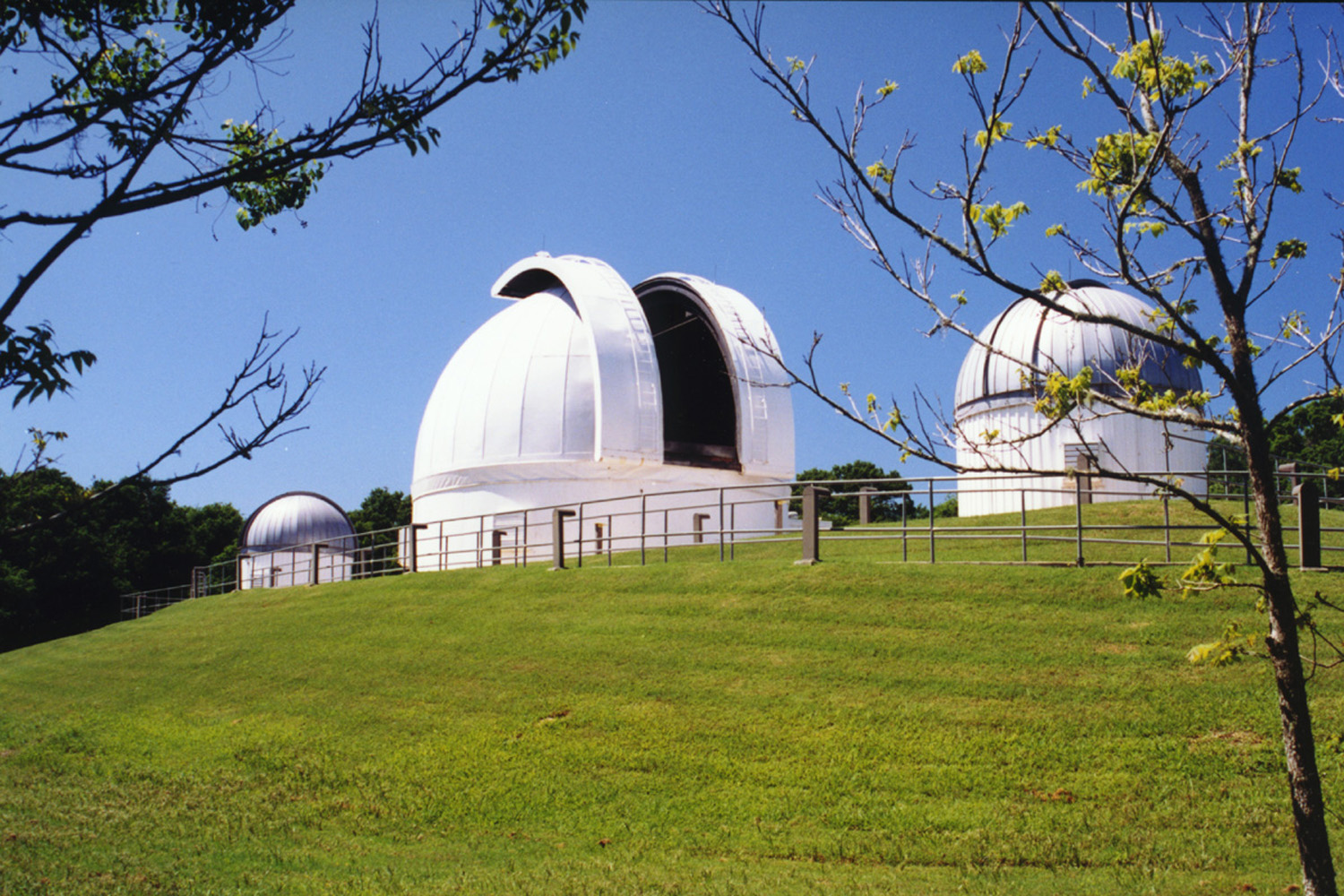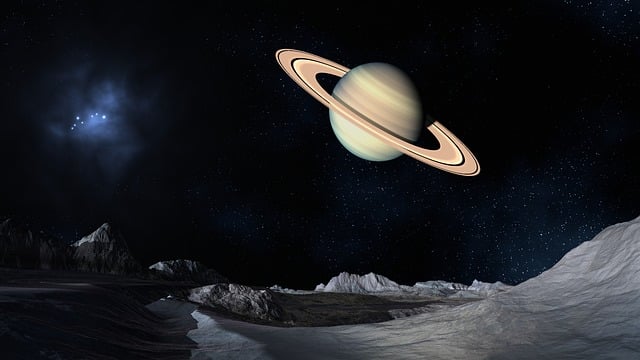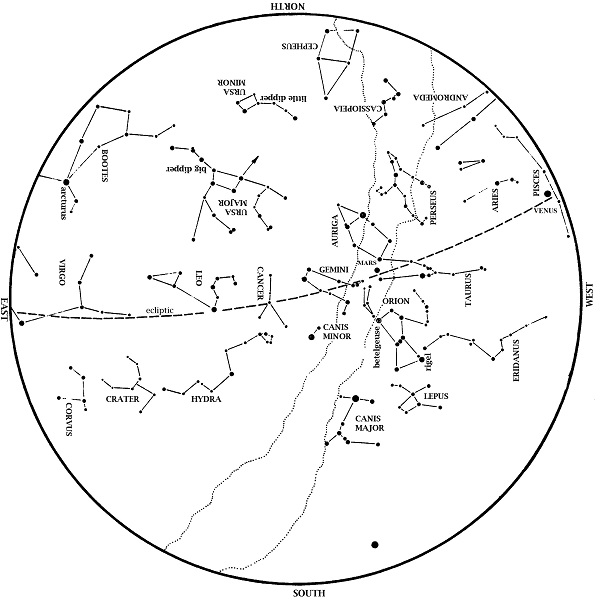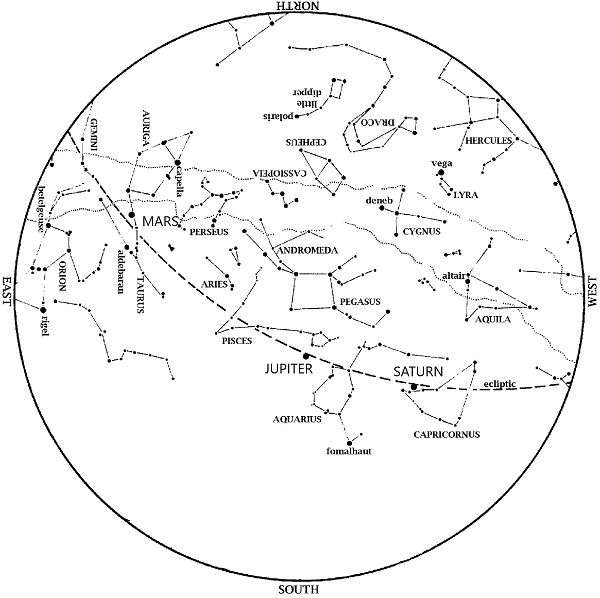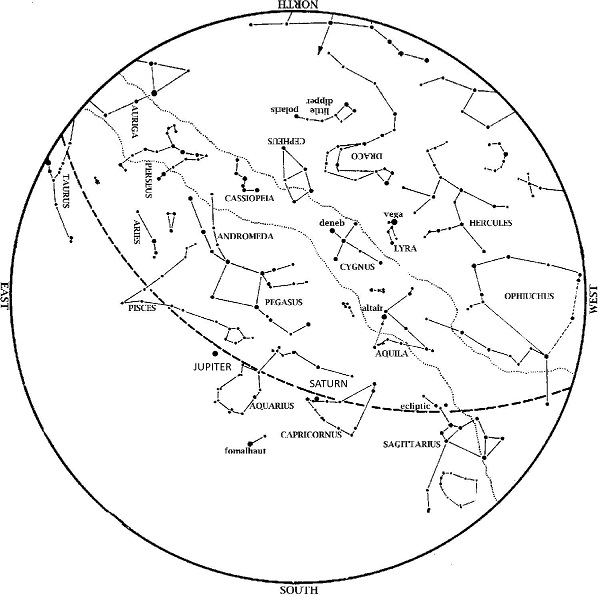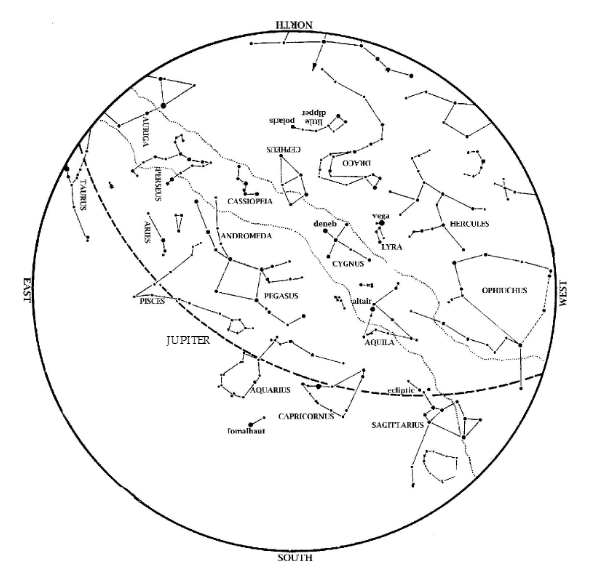This star map shows the Houston sky at 9 pm CST on January 1, 8 pm CST on January 15, and dusk on January 31. To use the map, put the direction you are facing at the bottom.
The Sky This Month
The Great Square of Pegasus sets in the western sky. Taurus, the Bull, is almost overhead. Dazzling Orion, the Hunter is high in the southeast, with his two dogs behind him. Sirius, the Big Dog Star, is the brightest star we ever see at night. Leo, the Lion, rises in the east. In the north, the Big Dipper gradually re-enters the evening sky.
Venus is a little higher in the evening sky this month. Greatest elongation (greatest separation between the Sun and Venus) is on January 12. Look in the southwest in evening twilight. Venus noticeably approaches Mars more than in previous months; they are only 5.5 degrees apart by the 31st.
Mars is now in the southwest at dusk. Mars continues to fade each night as Earth leaves it farther and farther behind.
Jupiter is much higher in the morning sky this month. Look in the south at dawn now, and more towards south-southwest by month’s end.
Saturn reappears low in the southeast at dawn this month.
Watch for the Great Square of Pegasus in the west at dusk. Taurus, the Bull is high in the south. Look for the Pleiades star cluster above reddish Aldebaran. Dazzling Orion, the Hunter takes center stage on winter evenings. Surrounding Orion are the brilliant stars of winter. Orion’s belt points down to Sirius, the Dog Star, which outshines all other stars we ever see at night. The Little Dog Star, Procyon, rises with Sirius and is level with Orion’s shoulder as they swing towards the south. To the upper left of Orion’s shoulder is Gemini, the Twins.
Moon Phases in January 2017:
1st Quarter Jan. 5, 1:47 p.m. Full Jan. 12, 5:34 a.m.
Last Quarter Jan. 19, 4:13 p.m. New Jan. 27, 6:31 p.m.
Solar Events
At 8:17 am on Wednesday, January 4, the Earth is as close to the Sun as it will get this year. Thus, Earth is at perihelion. Aphelion (greatest distance from the Sun) will occur in July. However, the difference between Earth’s perihelion and aphelion distances is small—0.9833 AU now vs. 1.167 AU in July (1 astronomical unit is the average Earth-Sun distance). That’s too small a difference to affect our seasons. The effect of Earth’s tilt on its axis easily predominates, so we have our cooler weather now rather than in July.
The latest sunrise of the year (7:18 am) occurs on January 10. That’s due to the same effect I mentioned last month; Earth’s slight acceleration near perihelion makes sunrise, noon, and sunset all occur a little later each day. Although the midday Sun is a little higher in the sky now than on the solstice, the difference is still small. After mid-month, when the Sun starts taking a much more noticeably higher, longer path across the sky each day, we’ll start seeing earlier sunrises and later sunsets as days lengthen.
Come see us Saturday nights at the George Observatory! On most clear Saturday nights at the George Observatory, you can hear me do live star tours on the observation deck with a green laser pointer.






